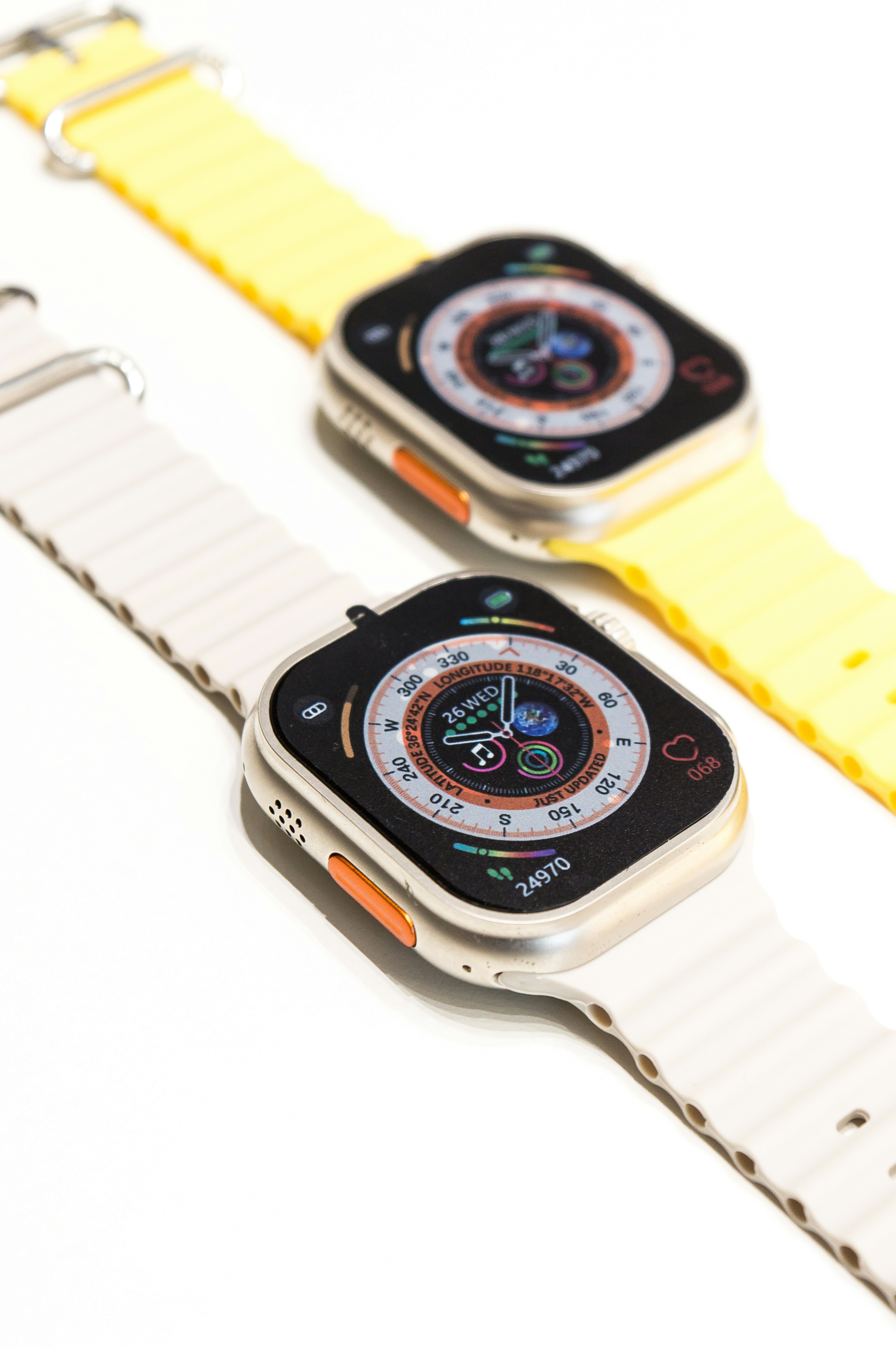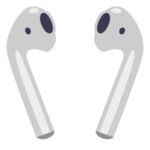Why Smartwatches Are More Than Just Timepieces: The Essential Accessory of 2025


The Evolution of Smartwatches: From Timepieces to Multifunctional Devices
The history of smartwatches can be traced back to early digital watches that showcased simple functionalities, such as displaying time and date. The introduction of these basic electronic timepieces in the 1970s marked the beginning of a technological revolution that transitioned watches from traditional analog designs into a new realm of possibilities. However, it wasn’t until the early 21st century that smartwatches evolved into multifunctional devices.
The pivotal moment in smartwatch development occurred with the advent of mobile technology and touchscreen displays. In 2000, IBM introduced the first smartwatch, the WatchPad, which combined PDA capabilities with timekeeping features. This product laid the groundwork for subsequent iterations, illustrating that a watch could do more than merely tell time. As technology advanced, manufacturers began to integrate features such as fitness tracking, notifications, and even GPS functionalities into watch designs, catering to an increasingly tech-savvy consumer base.
The integration of operating systems like Android Wear (now known as Wear OS) and Apple’s watchOS further revolutionized the smartwatch market. These systems allowed for compatibility with smartphones, enabling users to receive notifications, respond to messages, and access applications directly from their wrists. Such advancements made smartwatches not only convenient but also indispensable tools for managing daily tasks and health metrics.
Moreover, the incorporation of health-monitoring sensors represented a significant shift in smartwatch functionality. Devices now collect data on heart rates, sleep patterns, and physical activity, providing insights into personal health that were previously unobtainable. This evolution reflects a broader societal trend toward wellness and self-improvement, positioning smartwatches as essential accessories in modern life.
As we look towards 2025, it is evident that smartwatches will continue to evolve, integrating even more advanced technology that enhances their role beyond mere timepieces. The journey from simple digital watches to sophisticated multifunctional devices illustrates not only technological advancement but also the changing needs and desires of consumers in an interconnected world.
Key Features of Modern Smartwatches: What Sets Them Apart
The evolution of smartwatches over recent years has transformed them from simple time-telling devices into indispensable accessories that enhance daily life with their multifaceted functionalities. One of the most significant features of modern smartwatches is fitness tracking. These devices are equipped with advanced sensors that can monitor various physical activities, such as steps taken, calories burned, and even specific workouts. By providing users with detailed analytics, smartwatches encourage a more active lifestyle, making it easier for individuals to set and achieve fitness goals.
In addition to fitness tracking, health monitoring has become a primary focus for smartwatch manufacturers. Contemporary models often include features like heart rate monitoring, sleep tracking, and even blood oxygen level measurements. Such functionalities enable users to obtain a comprehensive overview of their health and wellness, facilitating timely interventions if irregularities are detected. The ability to track vital health metrics in real-time not only enhances user engagement but also promotes overall well-being.
Another essential aspect of modern smartwatches is their capacity for notifications and alerts. Users can receive calls, messages, and app notifications directly on their wrist, allowing for seamless communication without the need to constantly check their smartphones. This integration of notifications can significantly improve productivity and efficiency, enabling individuals to manage their time more effectively.
Moreover, the integration of various applications has further expanded the capabilities of smartwatches. From navigation apps that assist in travel to meditation and relaxation applications, these devices serve as a hub for essential tools. The synergy of these features not only simplifies tasks but also enriches the overall user experience, making smartwatches a vital accessory for the modern individual.
Fashion Meets Functionality: Smartwatches as Style Statements
In recent years, smartwatches have evolved beyond their fundamental purpose of timekeeping, emerging as essential fashion accessories that reflect individual styles and preferences. As we approach 2025, the aesthetic appeal of smartwatches has become increasingly significant, offering a blend of technology and design that caters to diverse consumer tastes. Numerous brands have recognized this trend, leading to a rise in the variety of styles, materials, and customizable options available in the market.
Today’s smartwatches come in a myriad of designs, ranging from sleek and minimalist to bold and ornate. Premium materials such as stainless steel, titanium, and ceramic are widely used, enhancing both durability and aesthetics. Additionally, the incorporation of luxurious finishes, like gold plating or matte textures, elevates the overall appearance, making these devices suitable for formal occasions and casual wear alike. The growing interest in sustainable fashion has also driven some manufacturers to adopt eco-friendly materials, aligning with the modern consumer’s values.
Customization is another vital aspect that has turned smartwatches into personal style statements. Many devices offer interchangeable bands, allowing wearers to switch between different colors, textures, and materials to match their outfits or moods. This personalization not only enhances the visibility of individual style but also provides functionality for various occasions, such as fitness activities or social gatherings. Moreover, the ability to modify watch faces according to personal preferences allows users to curate a unique look without sacrificing the watch’s digital capabilities.
As smartwatches continue to integrate advanced features while satisfying aesthetic desires, they serve as more than just practical gadgets; they stand as fashion statements that reflect the ever-evolving landscape of modern accessories. In this context, today’s smartwatches are poised to dominate the accessory market, combining functionality with fashion flair as we move deeper into 2025.
The Role of Smartwatches in Fitness and Health Tracking
In recent years, smartwatches have emerged as indispensable tools for fitness enthusiasts and health-conscious individuals alike. Beyond simply displaying time, these devices integrate cutting-edge technology to monitor various health metrics, thus assisting users in maintaining a healthy lifestyle. One of the paramount features of smartwatches is their ability to track heart rate. This functionality provides users with real-time data, allowing them to assess cardiovascular performance during workouts and daily activities. By keeping an eye on heart rate variability, users can optimize their exercise regimens and better understand their overall health conditions.
Moreover, smartwatches are equipped with comprehensive activity tracking capabilities that cater to a range of physical activities, from running and cycling to yoga and swimming. These devices can log steps taken, calories burned, and even distance traveled, offering a holistic view of one’s physical performance. Many models also incorporate GPS tracking, enabling athletes to map their routes and monitor their progress more accurately. Such detailed insights empower users to set personalized fitness goals and celebrate their achievements over time.
Additionally, smartwatches provide valuable health insights beyond exercise metrics. Features such as sleep tracking help users understand their sleeping patterns, emphasizing the importance of adequate rest in achieving fitness objectives. Many devices also include reminders for hydration and movement, which serve as gentle nudges to keep users active throughout the day. Furthermore, advanced health monitoring features, including ECG readings and blood oxygen level tracking, have made smartwatches critical in recognizing potential health concerns early on.
Given their multifaceted functionalities, smartwatches are quickly becoming essential accessories for those committed to enhancing their fitness and overall well-being. By marrying technology with health tracking, these devices not only support users in achieving their fitness goals but also contribute significantly to preventive health management, underscoring the integral role of smartwatches in modern health and fitness paradigms.
Staying Connected: How Smartwatches Enhance Communication
In today’s fast-paced environment, effective communication is essential. Smartwatches have emerged as pivotal tools in enhancing connectivity, allowing users to stay linked with their social and professional circles seamlessly. One of the core features of smartwatches is their ability to provide instant notifications for calls and text messages. This functionality ensures that users do not miss important communications while engaged in various activities, whether they are running errands, exercising, or participating in meetings. With just a glance at the wrist, individuals can assess the urgency of a message and respond accordingly, fostering an efficient communication flow.
Furthermore, smartwatches enhance users’ ability to stay updated on social media platforms. With apps designed specifically for these devices, notifications from platforms such as Facebook, Twitter, and Instagram are easily accessible. This means that users can quickly interact with their online communities, liking, commenting, or sharing posts, enhancing social engagement without the need for constant access to a smartphone. These features contribute to the feeling of being connected, a vital aspect of modern life.
Moreover, the integration of voice-activated technology in smartwatches allows users to answer calls or dictate messages hands-free. This capability not only maximizes convenience but also ensures that communication remains uninterrupted during activities that require hands-on engagement, such as driving or cooking. The ability to communicate effectively through smartwatches embodies the evolution of technology towards more integrated and multifunctional devices.
As the landscape of personal communication continues to evolve, smartwatches play an increasingly essential role in maintaining connections with friends, family, and colleagues. By streamlining communication, they provide users with timely updates and interactions, ultimately fostering relationships in our hyper-connected world.
Smartwatches and Modern Technology: The Integration of IoT
The role of the Internet of Things (IoT) in the functionality of smartwatches has transformed these devices from simple timepieces into vital tools within our interconnected environments. Smartwatches serve as an interface between the user and various IoT-enabled devices, controlling and monitoring them seamlessly. As such, they have become an essential accessory in today’s tech-driven world.
Modern smartwatches utilize IoT technology to communicate with a plethora of devices, ranging from smartphones and tablets to home automation systems. This enables users to manage their daily activities more efficiently. For instance, a smartwatch can be synchronized with a smart thermostat, allowing users to adjust the temperature directly from their wrist, ensuring comfort without the need to reach for their smartphones.
Furthermore, smartwatches can track fitness and health metrics, integrating with IoT healthcare devices, such as glucose monitors or blood pressure cuffs. This connectivity ensures users receive real-time data regarding their health status, promoting proactive healthcare management. By aggregating data from various sensors and devices, smartwatches play a central role in a user’s digital ecosystem, allowing for a more holistic view of health and wellness.
Additionally, smartwatches often assume the role of a control hub, enabling users to receive notifications, respond to messages, and interact with applications without requiring their smartphones. For example, many smartwatches support voice commands and respond to these commands with information pulled from connected devices. This level of interactivity exemplifies how IoT enhances the utility of smartwatches, making them indispensable tools for productivity and personal management.
In conclusion, the integration of IoT with smartwatches elevates their functionality, fostering a seamless interconnected experience that empowers users to navigate and control their lives with unprecedented ease and efficiency.
Choosing the Right Smartwatch: A Guide for Consumers
In today’s fast-paced digital world, smartwatches have evolved into multifunctional accessories that extend far beyond merely telling time. Selecting the right smartwatch can be a challenging endeavor, given the diverse range of options available in the market. Therefore, it is crucial for consumers to consider several factors tailored to their individual needs and preferences before making a purchase.
One of the primary considerations is compatibility with smartphones. Given that many smartwatch features rely on syncing with a mobile device, verifying compatibility with your existing smartphone operating system is vital. For instance, some smartwatches are optimized for iOS devices, while others function best with Android systems. Consumers should ensure that the smartwatch they select will integrate seamlessly with their smartphone to effectively leverage features such as notifications, calls, and app interactions.
An equally important factor is battery life. Smartwatches come with varying battery durations, often influenced by their features and display technology. Consumers should assess their usage patterns to determine how long they require a charge to last. Options ranging from basic fitness tracking devices that may last several days on a single charge to feature-rich models requiring daily recharging are available, making it essential to find a balance that suits one’s lifestyle.
In addition to compatibility and battery life, potential buyers should consider the features that align with their specific interests. From health monitoring tools to GPS navigation and customizable watch faces, the array of options can be overwhelming. Evaluating which features are genuinely essential can help narrow down choices and enhance satisfaction with the device.
Finally, brand reputation plays a significant role in selecting a smartwatch. Opting for reputable brands often ensures quality, robust customer support, and software updates. Researching user reviews and industry expert opinions can provide invaluable insights into the performance and reliability of various models, assisting consumers in making informed decisions.
The Future of Smartwatches: Trends and Innovations to Watch
As we look toward the future of smartwatches, several trends and innovations are poised to reshape their role from mere timekeeping devices to essential accessories influencing our daily lives. By 2030, advancements in features, design, connectivity, and health monitoring are set to redefine what we expect from these multifunctional gadgets, making them even more indispensable.
A major trend expected to emerge is the enhancement of health monitoring capabilities. Future smartwatches may incorporate advanced biosensors capable of providing real-time health assessments, enabling users to monitor vital signs such as blood glucose levels, hydration status, and mental health parameters. Innovations in non-invasive health monitoring could promote personalized fitness plans and early detection of potential medical issues, making smartwatches critical tools for preventive healthcare.
In addition, there is a notable push towards improved design aesthetics, with an increasing demand for devices that blend seamlessly into users’ lifestyles. By 2030, we may see smartwatches adopting more customizable options, allowing users to select materials, colors, and styles that cater to individual preferences. This personalization will elevate the smartwatch from a functional device to a fashionable accessory, fitting diverse occasions and settings.
Connectivity will also evolve, as future models are expected to offer more robust integration with various smart devices. The concept of the Internet of Things (IoT) will likely permeate into smartwatch technology, enabling wearers to manage households, control appliances, and interact with their environment through a singular, accessible interface. This greater interconnectivity enhances the usability and convenience of smartwatches, potentially making them central hubs for smart living.
Ultimately, the future of smartwatches appears bright, with innovative advancements set to enhance user experience significantly. As technology progresses, it will be exciting to see how these devices evolve to meet the growing demands of society, ensuring they remain crucial tools for both personal management and health monitoring in the years ahead.
Conclusion: Why You Need a Smartwatch in 2025
As we move further into 2025, the importance of smartwatches in our daily lives cannot be overstated. These devices have evolved beyond mere timekeeping tools to become essential instruments for fitness tracking, communication, and personal style. With their ability to monitor physical activity, heart rate, and even sleep patterns, smartwatches play a pivotal role in promoting a healthier lifestyle. By seamlessly integrating fitness tracking features, such as step counting and workout analytics, users can set and achieve their fitness goals more effectively.
In addition to their health benefits, smartwatches facilitate enhanced communication. Notifications for calls, messages, emails, and social media updates are easily accessible right from your wrist. This immediacy allows for effortless connectivity in our fast-paced world, ensuring that users remain informed and responsive without constantly reaching for their smartphones. This aspect not only boosts productivity but also aids in maintaining personal relationships by offering timely interactions.
Moreover, smartwatches have become a significant component of personal style and fashion. With customizable watch faces, interchangeable bands, and stylish designs, they cater to the diverse tastes and preferences of modern consumers. This makes them not just functional gadgets but also fashionable accessories that can complement any outfit or occasion.
Ultimately, smartwatches epitomize the blend of functionality, style, and connectivity that is essential in today’s lifestyle. As technology continues to advance, these devices are likely to become even more integral to how we manage our health, enhance our communication, and express our individuality. Therefore, investing in a smartwatch in 2025 is not merely an option but a necessity for those seeking to stay connected, healthy, and fashionable.







